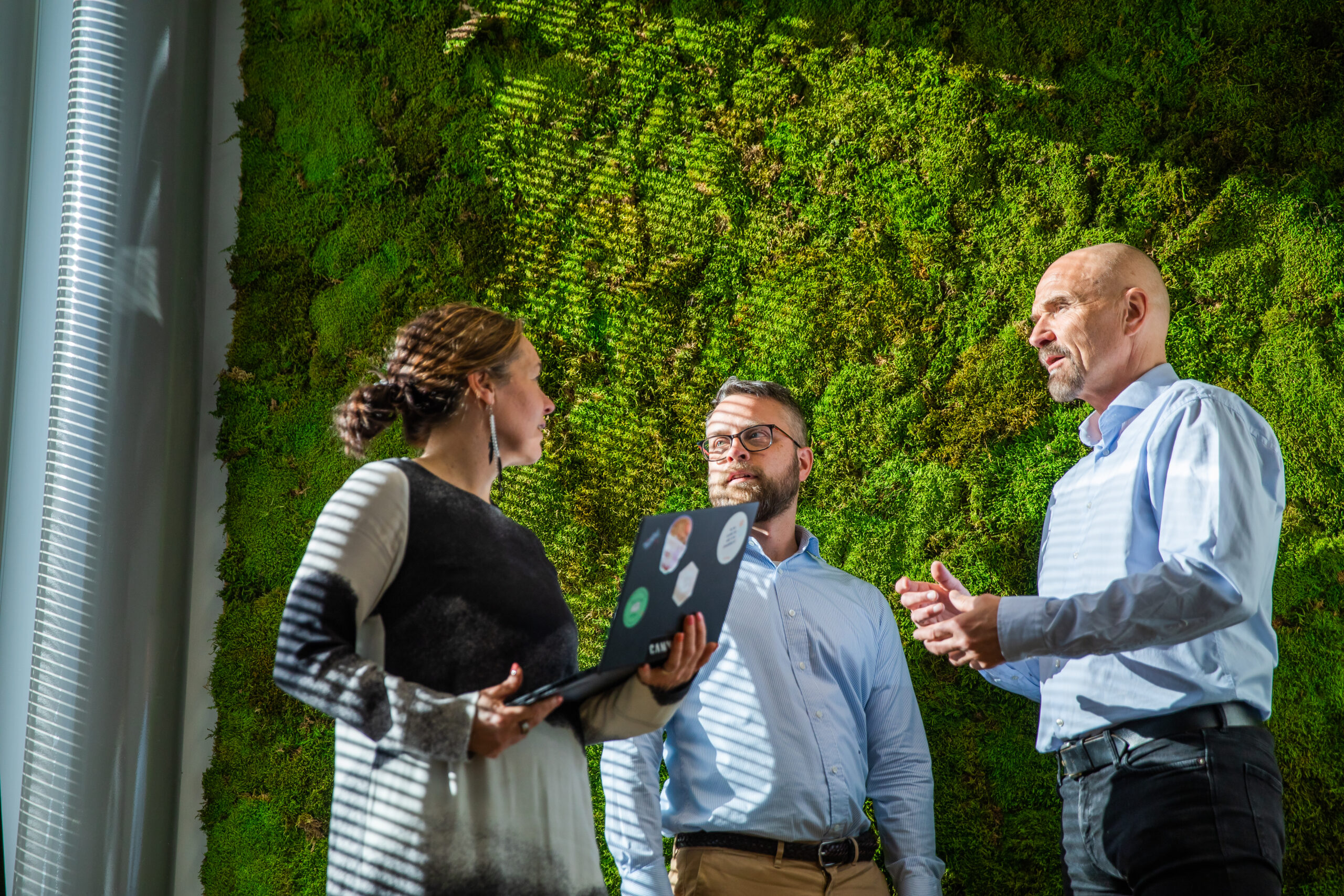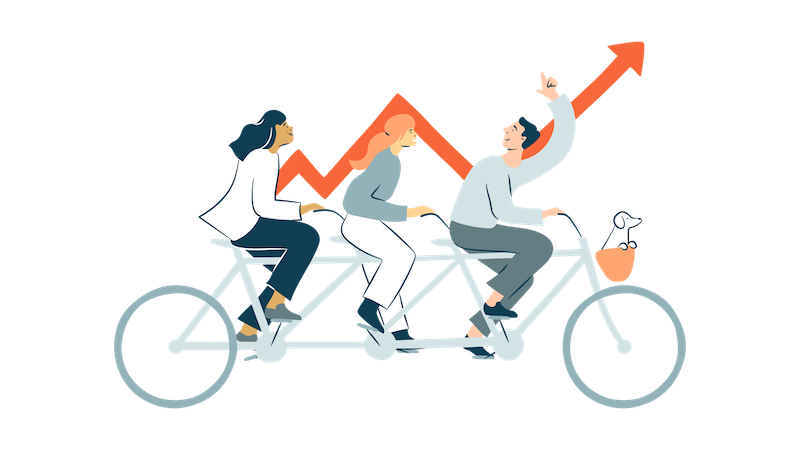“It is not the strongest species that survive, nor the most intelligent, but the ones most responsive to change.”
This famous quote[1] is very true looking at how species have survived and thrived during history. As change management specialists, we see that this is true also for organizations: it is the most adaptable and change capable organizations that will thrive and succeed in a world of constant and rapid change. But what makes some organizations better navigators and more change capable than others? In this blog we present a few ideas about some critical assets.
In our view, a strong organizational change capability consists of a lot of different assets. A mature mix of these assets helps organizations both prepare for and adapt to different future scenarios in the market. A sound organizational change capability gives organizations a strong competitive advantage. Rather adopt to changes swiftly than struggle among the “last-minute reactors” when the circumstances and changes in our environment already more or less force you to react.
The most mature and change capable organizations work on improving all these assets simultaneously and this demands a lot from their leadership. Leadership can turn the discouraging ethos of the “VUCA world” (Volatility, Uncertainty, Complexity and Ambiguity) into something inspiring where energy is directed towards detecting possibilities and taking actions: Vision, Understanding, Clarity and Agility[2]. Most of all it demands sharp insights, courage, and a strong commitment to building and keeping the organization and its people in a change capable shape.
What are these important assets then, and how can you ensure that you have a mature mix of them? We will present the assets we find crucial below. Bear in mind, though, that in practice, not many organizations can celebrate a strong matureness of them all, and the development of these assets is more of an ongoing voyage than a one-time-fix.
When deciding on how to develop the change capability of your organization further, the first step is to identify current strengths and weak spots. Have a look at the assets below and reflect on how well your organization is doing today.
Strong change management competences on several organizational levels ensures a good foundation for facing change
Missing out on supporting the people side of change is a common mistake companies make, leading to wasting a lot of money and resources invested in development projects and programs. This is why it is crucial to understand the people side of change, being able to manage the overall change portfolio, share a common language for change as well as commit to agreed change management methodologies, tools, and communication models.
A thorough understanding of the people side of change to succeed in change
- To know how to advance changes systematically and support individuals from their own perspective and based on their personal needs, you need to have a thorough understanding of how we as human beings react in changes and appreciate the importance of supporting people throughout change.
- It is also important to work in agile and responsive ways during different phases of change; too solid change management plans upfront might just prevent succeeding in change.
Change portfolio management to balance change load and people capacity
- How many changes are you deploying in your organization simultaneously? Do you know who are impacted by the changes in practice? And how much time and capacity have you allocated for the affected people to adopt these changes on top of performing their daily tasks?
- As the nature of work life becomes more complex, the capacity for understanding, learning, adopting to and sustaining changes and new ways of working is very thin. To help people in making the planned changes really happen and become the new way of working, it is important to look at the entire palette of ongoing changes and consider how to prioritize, sequence, and manage them.
Agreed change management methodologies and tools to have a shared language and to plan resources better
- Training people in change management competences offers you a shared language and understanding for discussing changes and our natural reactions to change.
- Having a shared set of change management methodologies and tools provides line managers and leaders with more understanding of what kind of resources and work is needed to make the change implementation successful and sustainable.
Clear communication strategies and engagement with people to ensure prompt and relevant communication for a strong commitment and valuable input
- When changes are coming, it needs to be clear who will communicate about various changes as well as what, when and how to communicate. In what cases is employee engagement crucial and what is your strategy for people engagement? In what cases do you need to address specific stakeholders or engage managers to cascade the message down to their teams?
- Overall, a culture of engaging employees in e.g., idea creation and decision making strongly supports the change capability of your organization.
Making quicker turns by being lean and agile and knowing who the captain is
Not only does your organization need to focus on people and getting their change management skills updated for being able to handle and manage the rapid pace of changes today. It is crucial to also have a look at leadership philosophies, management models, your innovation architecture, the structure, and flow of your processes to have a smooth “machinery” in place when navigating stormy waters, i.e., leading in constant change.
Agile mindset to catch the momentum and try out various solutions
- To respond to new phenomena in the markets, organizations need to catch the momentum and come up with new solutions faster than before. To do this it helps to have both predictive leadership as well as an agile mindset. In practice having an agile mindset means being ready to try new things, and if you fail, fail fast and then try again. Being responsive to feedback from your trials is crucial and being open to learning from your “experiments” is key.
Psychological safety to get enough innovative solutions
- Responding to changes in our environment highlights the need for innovations and new ideas. To get good ideas, we need many ideas and to get many ideas, we need to engage our entire workforce. When encouraging people to bravely bring forward their ideas and suggestions for new solutions, psychological safety is key.
Lean processes to be able to make faster turns
- Continuously working on improving your processes to be as clear, lean, and efficient as possible will support you in being a change capable organization. When you want to quickly adapt to changes in the surrounding world and implement new ways of working, it is easier to do so when your processes are lean and have a good flow compared to a starting point where your work processes are heavy with unclear responsibilities, bottlenecks, handovers, defects, and places for human error.
Clear management models to make prompt decisions
- Finally, you waste valuable time if you are not clear on who decides what and in what forums and when. If this is not clear, you might juggle matters back and forth or leave them hanging, with no final decisions, forcing you to be reactive rather than pro-active to changes in the market.
Developing mindset, skills, structures, models, and processes to be able to react fast to changes in your environment is no easy task. However, there will never be as few changes as today, so to thrive and succeed in the turbulent sea of changes in the future: get onboard this journey now and start developing your much needed capabilities to react fast to upcoming changes!
Are you planning on developing your organisation’s change capabilities?
[2] Digital Leadership Blog: VUCA World – Guiding Your Business Towards Success



